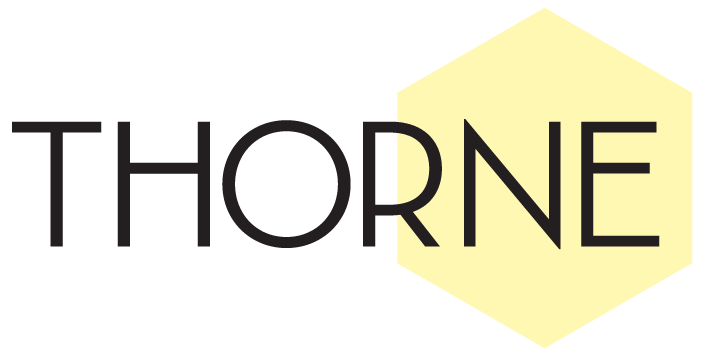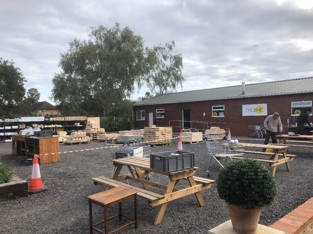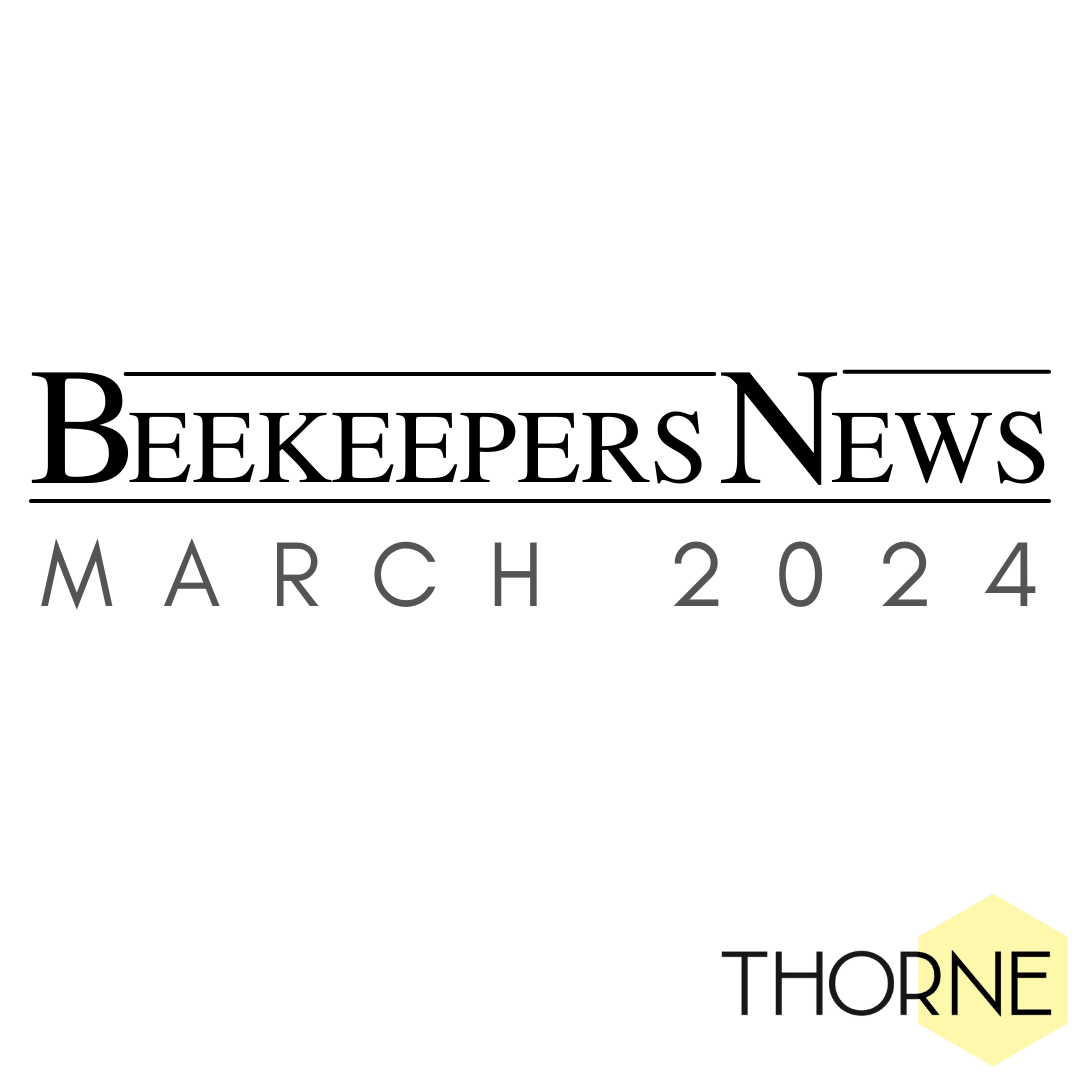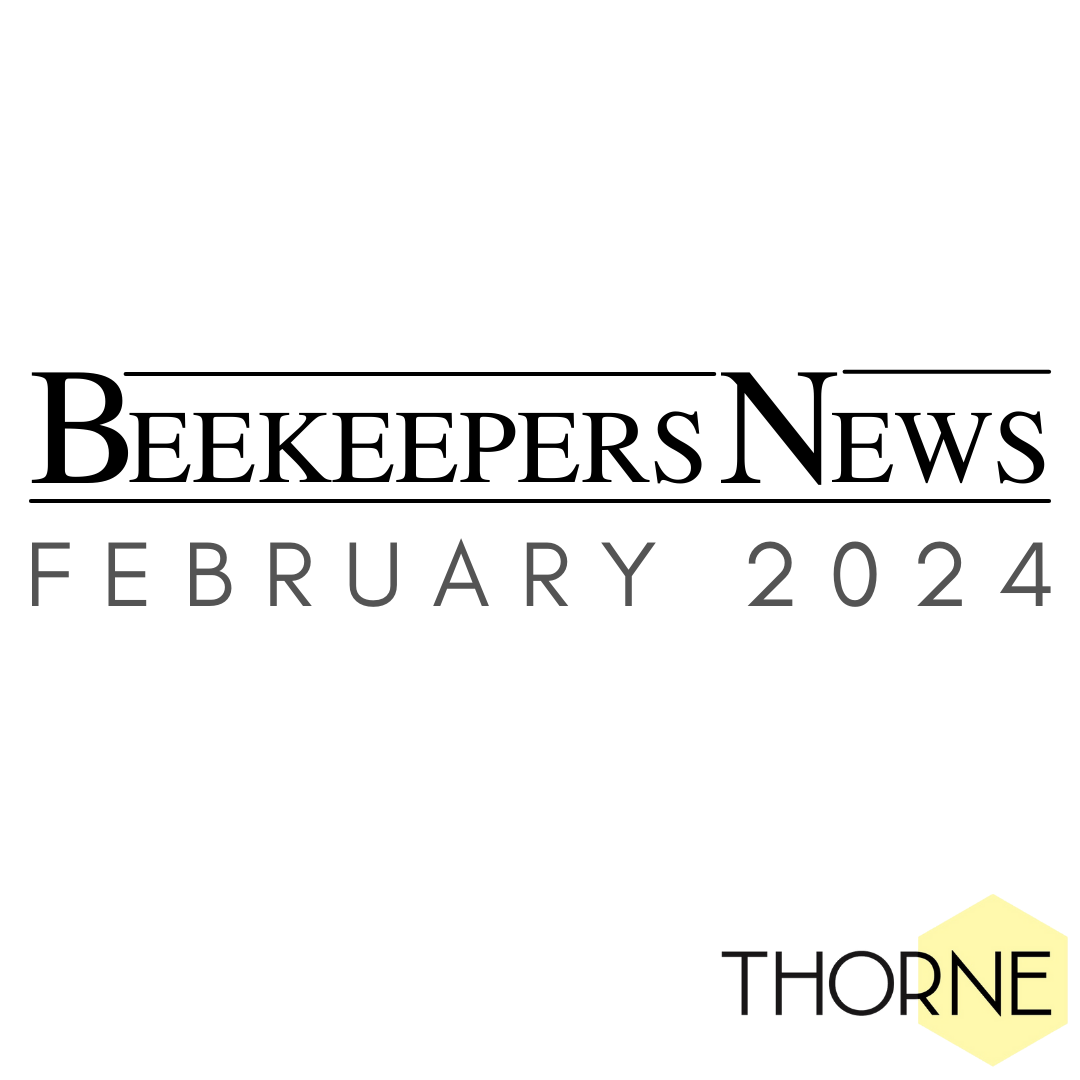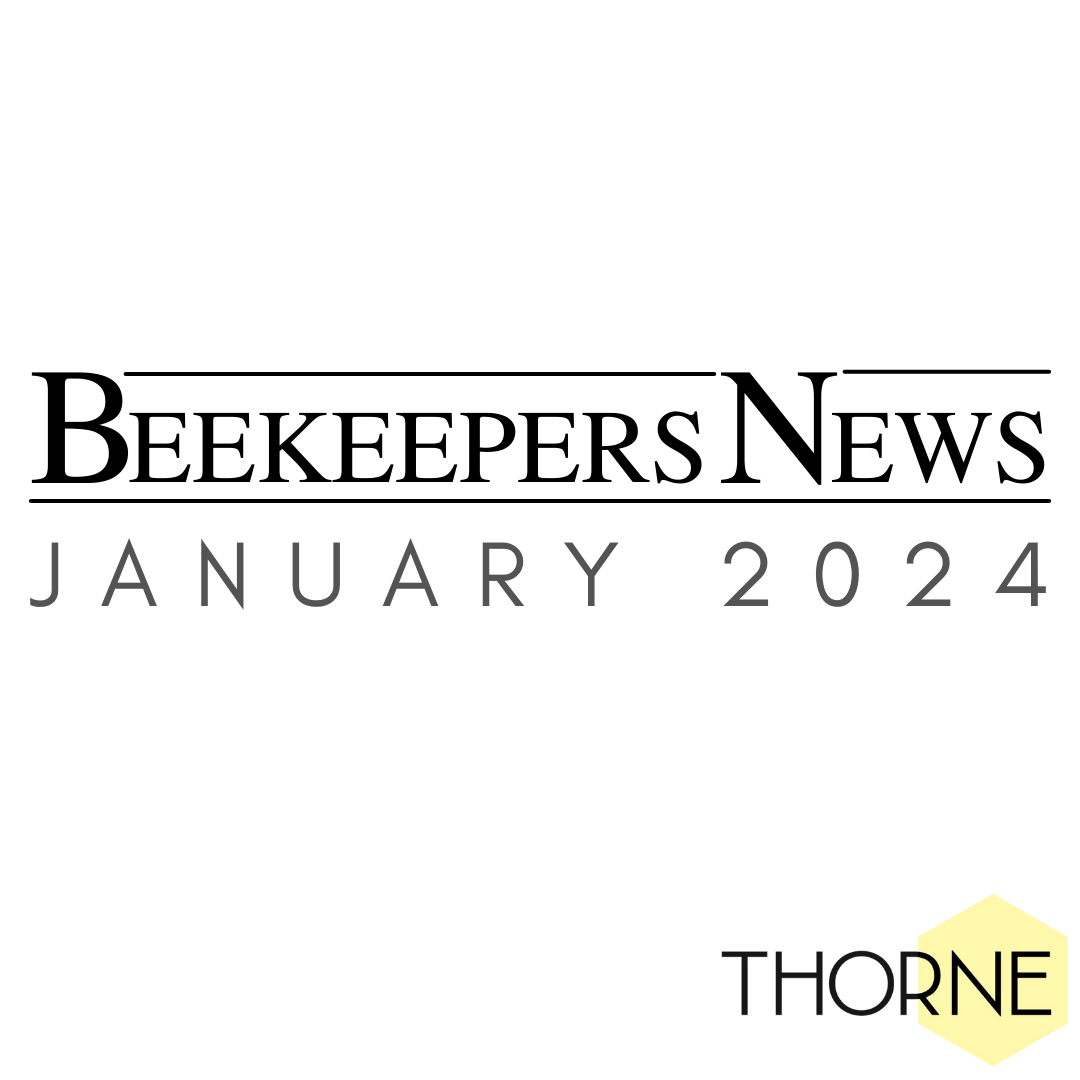September Roundup
September is the month of the southern branch sale days. The first of these was Windsor on 7th September where we were delighted to showcase our brand new shop. The outside space really came into it’s own, with customers chatting over a coffee and browsing the sale list. We are looking for someone to run our Windsor store for two days a week - Tuesdays and Wednesdays, 10am – 5pm. If you are interested in receiving more information please email rebecca@thorne.co.uk.
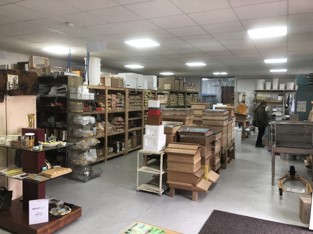
Stockbridge dawned bright and sunny, which seems to be the norm for our Hampshire sale day. It was business as usual as Lin and her team served the many customers who had made the journey.
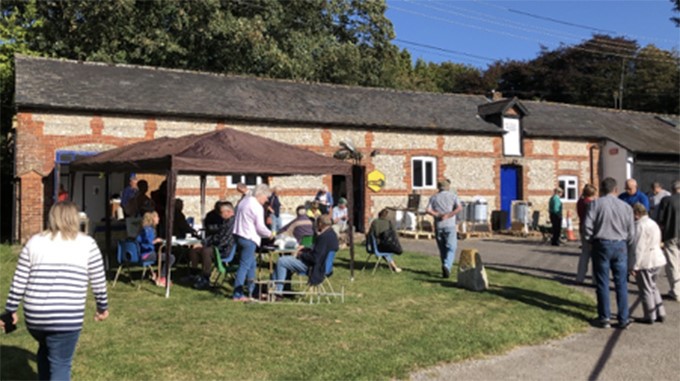
The final weekend of the year saw us at our Devon Sale Day. Considering the rain earlier in the week we were exceedingly lucky and the day was certainly not a wash out. We saw lots of familiar faces but many new ones too, some visiting the shop for the first time. All being well this will be the last sale day at our current premises at the Old Quince Honey Farm. Look out for an announcement soon detailing our move to the new Quince Honey Farm – just down the road.
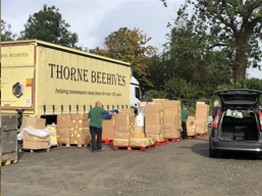
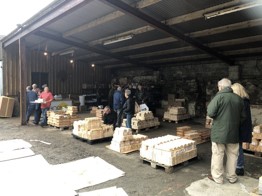
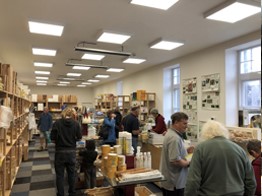
September 2019 also saw us spend just a few days at Apimondia in Montreal. Apimondia is the bi-annual world beekeeping congress and attracts beekeepers from all over the world who come to listen to amazing lectures, attend workshops and browse the Api-Expo trade stands. Although we did not exhibit this year, it was very useful to talk to our suppliers and customers and to keep abreast of any new developments in the beekeeping world. Watch this space for some exciting new products to be launched soon.
Rand Open and Sale Day and the National Honey Show
We are looking forward to our Rand Sale and Open Day on Saturday 12th October. This is our main sale and we are expecting hundreds of beekeepers to descend on our factory in Lincolnshire for a full day of beekeeping fun.
Our popular 3rd quality brood bodies and supers (see photo below of a few of the 3rds in our warehouse) will be on offer (these cannot be ordered in advance), as well as a whole host of second quality equipment, end of line and shop-soiled goods. We will be offering factory tours, the museum will be open and why not take a stroll around the grounds and lakes?
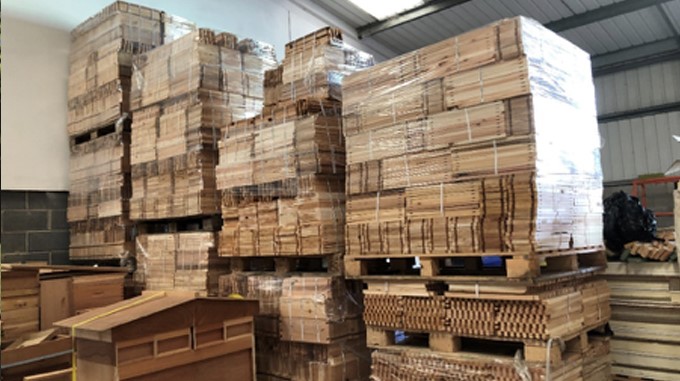
Are you a beginner or new to beekeeping? We will have a dedicated beginners area out in the sale area with expert beekeepers to chat to. They will have a variety of equipment to look at plus complete hives, boxed up and ready to go.
The restaurant will be open as soon as the first customer arrives serving bacon butties, hot and cold meals and a delicious range of homemade cakes. Tea and coffee will be available for free all day long, and we are encouraging customers to ‘bring their own mug’ and ‘refill their own bottle from our water fountains’ so we can cut down on those pesky plastic bottles and cups.
We are lucky that Tony Jefferson has agreed to talk on ‘Oh no, queen cells……what shall I do?’ – Demystifying Swarm Management. So, take a seat for this in our boardroom at 11.30am.
Beekeepers often use the sale day to bring in their wax for conversion. You will find this service in our despatch department just off the shop. If you have a car full of wax please let our car park attendants know and they will direct you to the closest door.
For more information and to place an order to collect on the day see our website or send an email. For a pdf copy of the current sale list (now includes crystal containers and assembled National Brood Bodies and Supers) click here.
National Honey Show
The Thorne’s team are also hard at work preparing for the National Honey Show. We’re hoping to wow you with our stand and put on a great display at the world’s foremost honey show. Sale items can be ordered for collection at the show and we will be taking our full range of products for you to browse. If there is anything in particular you would like to look at then please do let us know.
Our beeswax conversion service and all the orders will again be outside in the main car park. Just look for the Thorne lorry and head over. You can drive your car right up to this area and we will have Thorne people on hand to help you.
We can also help with transporting your honey, candles or other exhibits to the show. Just drop them off (well labelled and packaged) at one of our branches and we will hand over to the organisers and collect at the end of the event.
Ask the Expert
What is a Nadir?
NADIR - Synonyms of nadir – Base, Basement, bottom, foot, rock bottom.
In the wild, bees build their nests from the top of the cavity down, establishing the nest first. As the brood hatches the cells are back filled with stores, so the nest progresses down as the comb extends downwards into the cavity. The nest ends up at the bottom of the (now filled) cavity with all the stores above. In the winter months the bees consume the stores bottom up, finishing back up at the top of the nest in the spring.
Apis mellifera mellifera – the European Dark Bee would happily overwinter in a single brood box, requiring about one pound of honey per week for the twenty six weeks of winter. The lighter more prolific hybrids and mongrel breeds we have now require anything up to twice that amount of stores to survive the winter.
I run my colonies on a brood or brood and a half box, Queen Excluder, and the first super above the nest is for the bees. When the queen is in full lay, often she will fill the brood box, and there is little in the way of stores about the nest. The first super will seldom have the bottom edge of the honey capped, and sometimes there is pollen stored in there as well. I always allow the bees to have and use the first super as their “pantry” and it is usually adequate to see them through the June gap (often at the end of May).
Late in the year I put “their Super” under the brood box – nadiring - at the same time removing the Queen Excluder. This serves several purposes in one manipulation:
Any uncapped super frames of honey that I couldn’t extract can be swapped for capped ones from “their Super” the bees will sort them out for me.
The foraging bees “know” the food is there as they pass it on the way in and out. If I feel they still need extra stores, the feeder goes on the crown board above the brood box, and the bees will back fill the nest as the brood hatches, so we are feeding directly into the top box. The bees will work through the stores bottom to top, finishing under the cover board and if they need it, fondant can be supplied without disturbance. Fondant also works as a deliquescent absorbing water, which helps to keep the hive from getting too wet.
In lifting the warmth of the nest further from the entrance vermin are less likely to detect the warmth of the nest, and are more likely to give breaking in a miss.
Finally if you are a weekend beekeeper (“and into life a little rain must fall, usually at the weekends”) if you are late in doing your first spring inspection, your bees are more likely to still be in residence, rather than that swarm you heard about… and yes, they were yours!
On your first inspection, run a little smoke under the floor… remove the brood box to one side, put “their super” separately aside. Clean the floor and put brood box back down on the floor. Check brood pattern; you should see the queen as she is most likely to have run up into the top box to avoid the smoke. Put back the cleaned Queen excluder and then “their Super”. Check this if you haven’t seen the queen, just in case she was down there. If you find her pop her in the bottom box. The bees will look after any odd brood in “their Super” until it hatches, whereupon the super will revert to a honey store. The smell of the colony both sides of the fresh queen excluder appears to help to overcome the bees reluctance to move upwards into new boxes.
Equiptment Focus
It is at this time of year our focus moves to feeding and settling the bees down for the winter months. Adding insulating materials in the autumn and ensuring adequate ventilation will help keep the bees warm and dry, but it should also be cold enough so they cluster over the very cold months.
Our insulated quilts come in all major hive types. The 20mm thick insulation flexible board is made from recycled chip foam. The quilt fits snugly inside an empty super or brood body and can be used on top of bags of fondant. Quilts cost £3.00.
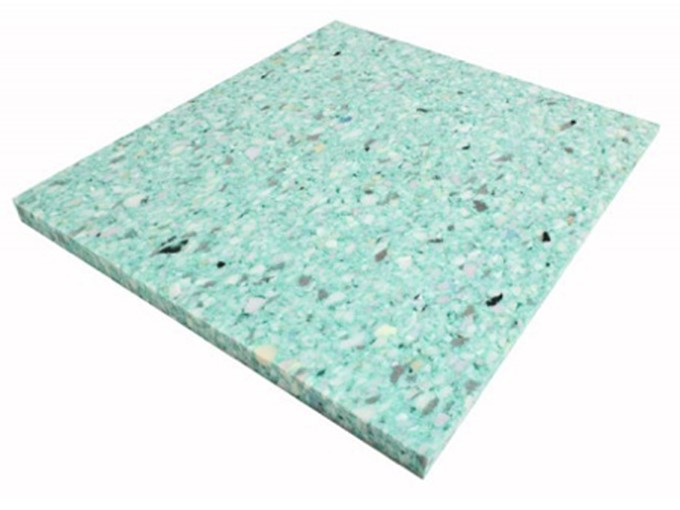
Here at Thorne we try very hard to use sustainable material, very little is wasted and we are justifiably proud of our green credentials. We use our wood waste to either heat our woodwork factory and engineering department, produce briquettes for wood burning stoves or it is made into garden mulch. Our parcel packaging is recycled shredded cardboard boxes. Then the beekeepers recycles once again as a fantastic smoker fuel.
A couple of years ago, and in line with our green credentials, we introduced a product called SHINS – Sustainable Hive Insulation.
SHINS is made from cork, which is well known as a highly efficient insulator in the building industry. It has a slightly higher thermal conductivity than expanded polystyrene foam.
Made up of two inserts and two frames, SHINS is available for the National Hive only in standard brood (DN4) , 14”x12” and super (SN4) sizes.
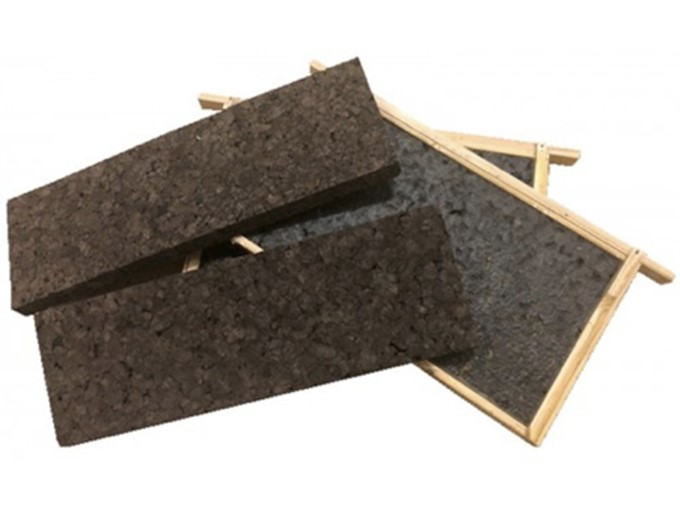
The cork inserts are shaped to fit snugly between the locking bars on the outside of the hive. These are held in place by heavy duty elastic bands. This means they can easily be removed in the warmer months if desired.
The frames are based around a standard Hoffman frame with cork board insulation inserted rather than foundation. These frames are then dipped in beeswax. Remove one of the outer frames from the brood body or super and insert the SHINS frames, one on each side, of the remaining frames. You therefore overwinter with ten conventional frames and two SHINS. Price starts at £9.55 for the super pack.
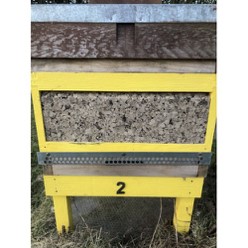
Beekeeping Blog
September 2019
This September has really felt like the end of the active beekeeping season, what with the increasingly wet weather, colder days and darker evenings. However, we have managed to take advantage of some of the nicer days to do quite a few essential jobs before we leave the bees tucked up for winter.
Again, the main job has been to feed the bees. Each colony has received roughly the same amount of Ambrosia syrup, basically, as much as the English feeder will hold! This has given all the bees the option to take the syrup if they need it. We fed initially in August and have fed again in September as we want to give the bees the best head start into autumn, before it is too cold to feed syrup.
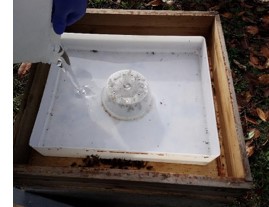
As always, when feeding syrup, we tried to do this on days where the bees were not so active, to reduce the amount of robbing. However, when bees get a taste for it, any tiny splash will cause a frenzy, as you can see from this video: VIDEO. This didn’t last very long however, as a downpour was right around the corner and put an abrupt end to their robbing activities.
This month, we decided on Apivar for our varroa treatment. This is because it has been found to be very successful, due to the long treatment period and it is not temperature dependent. This will be left in for the full 10 weeks, at which point it will be removed to avoid any resistant mites that may develop.
A couple of smaller colonies were united this month as one had turned into a drone layer. This was merged using the newspaper method with one of the smaller colonies, to give them both the best chance of surviving the winter. We also merged any colonies that were on double brood back down to single brood by taking out any empty or damaged frames and confining the bees to one box. This should keep the space the bees have to keep warm down to a minimum, whilst ensuring the frames kept in the hive are useful to the bees with either brood or food in them.
With the colder weather approaching, we have introduced insulated quilts to some of the smaller colonies, just to give them that little bit of extra warmth. For now, these have been placed on top of the feeders, but when the bees have finished taking the syrup, the feeder can be removed and the quilt placed directly onto the crownboard. If supers with food for the winter are to be left on top, queen excluders should be removed to give the bees the best chance of reaching the food.
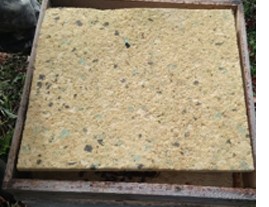
There have also been a couple of smaller odd jobs to do around the apiary this September. We have made sure that the entrances to the hives are clear from weeds and grass – it sounds obvious but everything has grown so quickly here recently and entrances can soon become blocked off, making it hard for the bees to find their way in. You can see from this photo that the weeds had grown over the entrance and needed removing:
With the wasps still around, the Wasp-Outs have been left on the hives so far, but we checked inside the contraption to make sure the entrances were not blocked up with dead bees, for example. This again, just makes it easier for the bees to make their way in and out of the hive.
As the bees’ activities start to wind down for winter, you would hope it would be the same for the beekeeper. But we all know that is not quite the case and next month there will be plenty of little jobs to keep us busy!
Bees for Development Update
The Bee Quiz!
Come and see Bees for Development at the National Honey Show (24th-26th October at Sandown Park). We'll be on stand no. 14 during the day. On the Friday night, the great BfD Bee Quiz returns, hosted by the wonderful Bill Turnbull and with supper and a glass of wine provided. See if you can beat your beekeeping peers at some not-so-seriously challenging bee-related questions! Book your tickets here.
Bee Safari to Western Uganda
2nd-13th March 2020
Join Bees for Development to visit Western Uganda to experience the amazing range of beekeeping here. You'll see first-hand the real and lasting impact that beekeeping is having on local communities.
This twelve-day trip will also provide you with the opportunity to visit Uganda’s closed canopy forests and to encounter some of its fabulous wildlife.
http://www.beesfordevelopment.org
For courses and training days coming up in the UK and around the world visit http://www.beesfordevelopment.org
Sign up to hear news and views from Bees for Development on the charity's Enewsletter, just go to www.beesfordevelopment.org and provide your email address.
National Honey Show News
Firstly a thank you to everyone who has sent in their entry forms for the competitive side of the show early. This really helps Jill, our entries sec, and also helps us plan the show if we need double the space to display all your hard work. As a reminder, entries need to be booked in, i.e. forms sent to Jill: entries@honeyshow.co.uk by Monday 7th October. Late entries can be accepted up to 14th October but incur a late entry fee. Details and forms are on the website: https://www.honeyshow.co.uk. For overseas exhibitors, there is a link to a comprehensive guidance for oversees exhibitors on the same web page.
Remember Thornes shops and maybe other volunteers will deliver your show entries if you book them in. Don’t forget to send the entry forms detailing your entries to Jill in good time; and make sure the goods themselves arrive at Thornes, Northern Bee Books or whoever is taking them for you.... before they depart for the show.
As well as our dazzling programme of lectures and workshops at the show, there are our usual evening events open to visitors:
On Thursday evening, The Central Association of Beekeepers are holding their usual social evening, this year at Esher Cricket Club fifteen minutes’ walk from the show. The speaker will be Dr Ralph Büchler of the Bee Institute in Kirchhain, Germany, who will talk and answer questions about his scientific career. This will be followed by a finger buffet and drinks. Tickets (£20) can be booked online at https://www.cabk.org.uk or at the Central Association stand at the show itself.
On the Friday evening you can sign up for good company and to support Bees for Development at their Quiz hosted by Bill Turnbull. It’s held in the Sandown Park main Food Hall at 6pm, Tickets £20 available at www.beesfordevelopment.org or from the Bees for Development stand at the show itself.
Finally, we have the first ‘Sticky Festival‘ of activities for children on the Saturday, with creative activities, music and stories by authors. This year’s winner of the IMYB (International Meeting for Young Beekeepers) will be around to talk about his experiences and to answer any questions.
It’s going to be another excellent show: we’ll look forward to seeing you there.
National Honey Show 24 to 26 October 2019
Sandown Park Racecourse,
Esher, Surrey, UK
Upcoming Events
Rand Open and Sale Day – Saturday 12th October
National Honey Show – 24th-26th October
